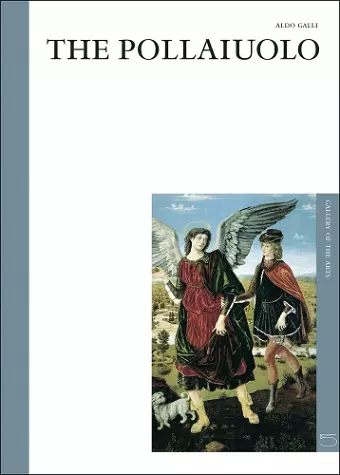The Pollaiuolo
The Art Gallery Series
Format:Hardback
Publisher:Five Continents Editions
Published:30th Dec '99
Currently unavailable, and unfortunately no date known when it will be back

Antonio (1431/1432-1498) and Piero (1441/1442-after 1485) del Pollaiuolo have always enjoyed a certain notoriety and, together with Verrocchio, Botticelli, and Ghirlandaio, occupy a central place in all books about Florentine art at the time of Lorenzo the Magnificent. However, the image we now have of these two bold artists, the sons of a chicken vendor in the old market of Florence, is rather misty. It is generally thought that Piero, ten years younger than his brother, was merely an assistant to the multi-talented Antonio, who excelled in disciplines as various as painting, sculpture, silver and gold work, and architecture.This view is attributable to Vasari but fails to correspond to the respect in which both artists were held at the time and probably deserves to be reconsidered. The almost total disappearance of brooches, necklaces, cups, bowls, candlesticks, crosses, incense-burners, chalices, and reliquaries made of gold, silver, enamel, and precious stones created by Antonio has greatly harmed the reputation of this highly talented artist. These objects are all documented, but they were all at some stage melted down and their precious materials reused (a common fate for many pieces of gold and silver plate). The visionary and dramatic imagination of the man Florence proudly remembered at his death, calling him 'our citizen, a famous sculptor of unrivalled skill in his art,' is displayed especially by the two bronze tombs of Pope Sixtus IV and Pope Innocent VIII in St. Peter's and by a wonderful body of drawings. In these autograph sheets, Antonio's sure line, precise as a scalpel, gives birth to a race of fabulous heroes with superhuman build, chests expanded to the utmost, lithe and elastic arms and legs: gladiators, archers, musclemen, martyrs. The two funerary monuments in the Vatican, which amazed the artist's contemporaries, mark the highpoint of Antonio's career. One of his most impressive works is the highly original tomb designed for Sixtus IV, a great bronze creation covered with panels containing allegorical figures that was designed to fit into the chapel the Pope himself had built for the purpose, decorating it with ancient porphyry columns and frescoes by Perugino. It is no surprise that such a masterpiece of bombastic commemorative intent should have been commissioned by the dead Pope's nephew, Giuliano della Rovere, who as Pope Julius II in turn engaged Michelangelo to design a tomb for him that would surpass even his uncle's in inventive magnificence.
ISBN: 9788874391301
Dimensions: unknown
Weight: unknown
92 pages